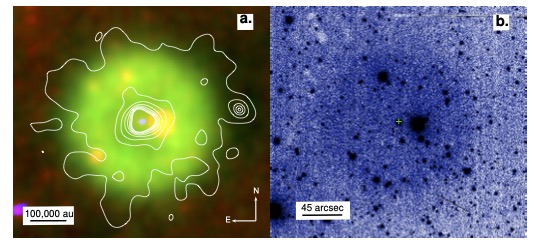| 11th of April 2024 |
|---|
 |
| ATNF Colloquium |
| Stars that merge in the Milky Way |
| Albert Zijlstra (University of Manchester) |
|
Stellar explosions come in two main varieties. At the top end are the
supernovae, visible to cosmological distances but which may be missed
when occurring in our own Milky Way. The second group are the novae,
frequent events but much fainter. But some transients fall in between,
too bright and long-lasting for novae but too faint for
supernovae. Although rare, there are some historical observations of
such events in the Milky Way. This talk will discuss two such
eruptions. The first is CK Vul, which exploded in 1670 as a 3rd
magnitude nova, re-appeared in 1671 and again in 1672. The second
event is the supernova of 1181 which was (only) as bright as Saturn
but remained visible for 180 days. Both objects are understood as
stellar merger events; SN1181 is a possible Type Iax supernova, the
least understood of the major supernovae.
The image above shows the Pa 30 nebula, which we identify as the remnant of the supernova explosion of the year 1181. The left panel shows a false colour image of Pa 30 where red stands for an image taken with the WISE satellite at 11 micron, green for WISE 22 micron, and blue for ultraviolet emission mapped by the GALEX satellite; the contours show X-ray emission mapped with the XMM-Newton satellite. The majority of the X-ray emission originates from the core of the nebula while WISE sees the larger nebula. The panel on the right shows an image of the [O IIII] emission from the nebula, taken with the 2.1-m telescope at Kitt Peak [O III] image. The green cross in the center of the image marks the location of the central star. Both panels are to the same scale. |